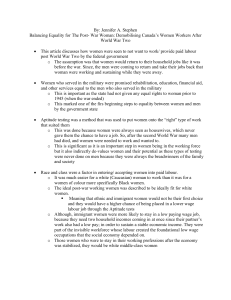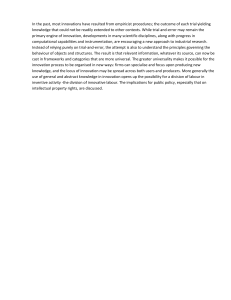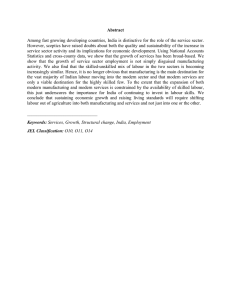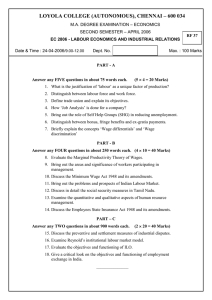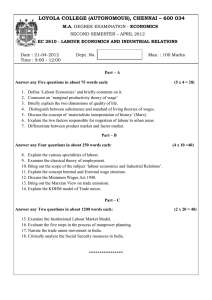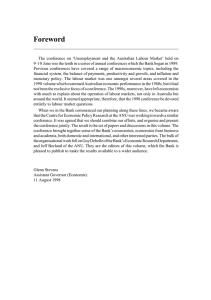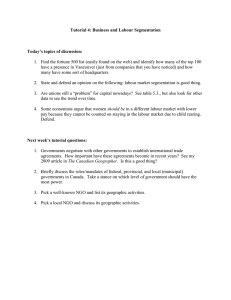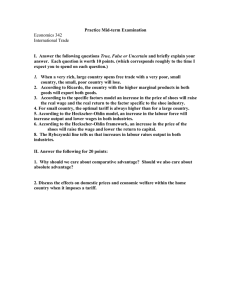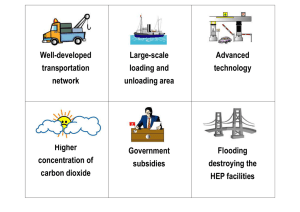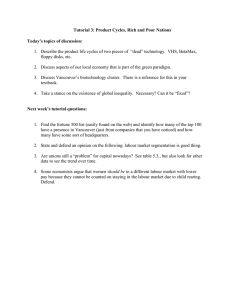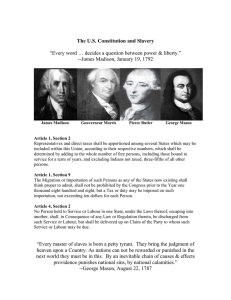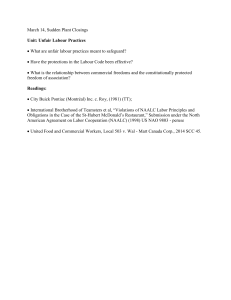File - CaRLO Economics
advertisement
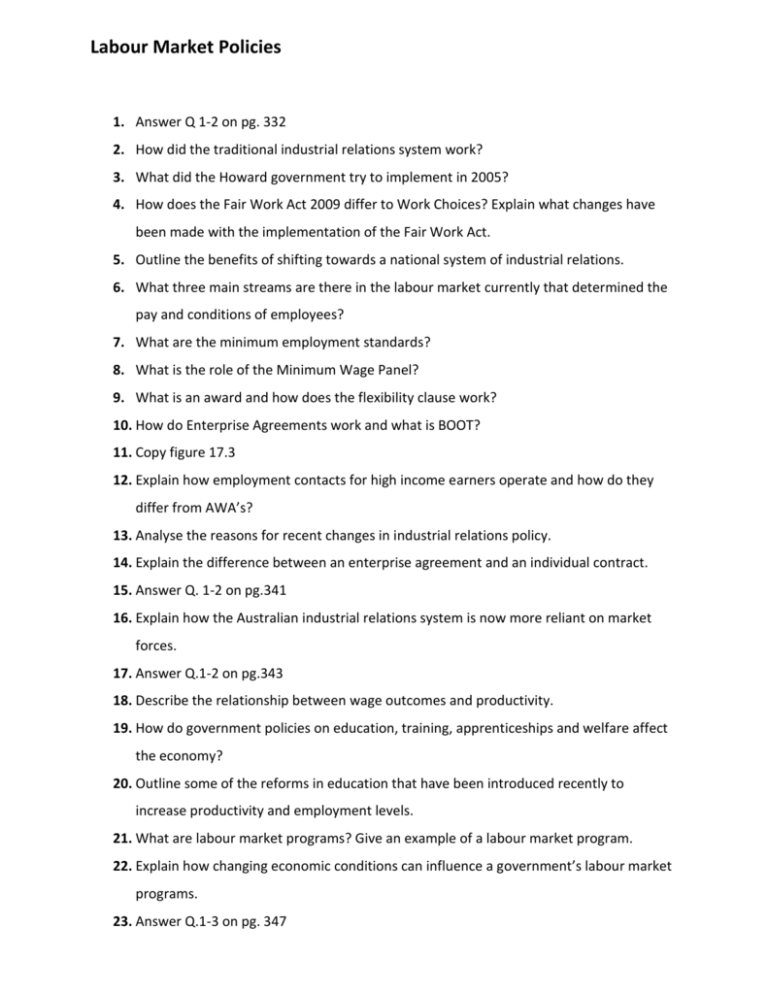
Labour Market Policies 1. Answer Q 1-2 on pg. 332 2. How did the traditional industrial relations system work? 3. What did the Howard government try to implement in 2005? 4. How does the Fair Work Act 2009 differ to Work Choices? Explain what changes have been made with the implementation of the Fair Work Act. 5. Outline the benefits of shifting towards a national system of industrial relations. 6. What three main streams are there in the labour market currently that determined the pay and conditions of employees? 7. What are the minimum employment standards? 8. What is the role of the Minimum Wage Panel? 9. What is an award and how does the flexibility clause work? 10. How do Enterprise Agreements work and what is BOOT? 11. Copy figure 17.3 12. Explain how employment contacts for high income earners operate and how do they differ from AWA’s? 13. Analyse the reasons for recent changes in industrial relations policy. 14. Explain the difference between an enterprise agreement and an individual contract. 15. Answer Q. 1-2 on pg.341 16. Explain how the Australian industrial relations system is now more reliant on market forces. 17. Answer Q.1-2 on pg.343 18. Describe the relationship between wage outcomes and productivity. 19. How do government policies on education, training, apprenticeships and welfare affect the economy? 20. Outline some of the reforms in education that have been introduced recently to increase productivity and employment levels. 21. What are labour market programs? Give an example of a labour market program. 22. Explain how changing economic conditions can influence a government’s labour market programs. 23. Answer Q.1-3 on pg. 347
